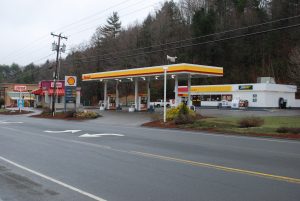In a rural state like Vermont, it might be tempting to assume we don’t experience sprawl or strip development. Strip development – auto-oriented development along highways outside our community centers – can negatively affect the vibrancy of those centers, the function and safety of our roads, and our state’s carbon footprint.
This incremental development of gas stations, small box stores, restaurants, and more also threatens to undermine our landscape. The many issues caused by strip development show that where we choose to develop matters for achieving various local and state goals.
While Vermont may not see the scale of sprawl found elsewhere, we still see land used in ways that reinforce auto dependency and break up farm and forest land. VNRC has recently updated our Community Planning Toolbox to include additional resources focused on the issue of strip development.
The Community Planning Toolbox was developed by Smart Growth Vermont, which merged with VNRC on July 1, 2011. Since that time, the toolbox has been maintained and updated by VNRC. The Community Planning Toolbox introduces users to the issues, techniques and resources for smart growth planning. It features case studies and sample tools that demonstrate how other communities have addressed similar challenges to those facing your community.




